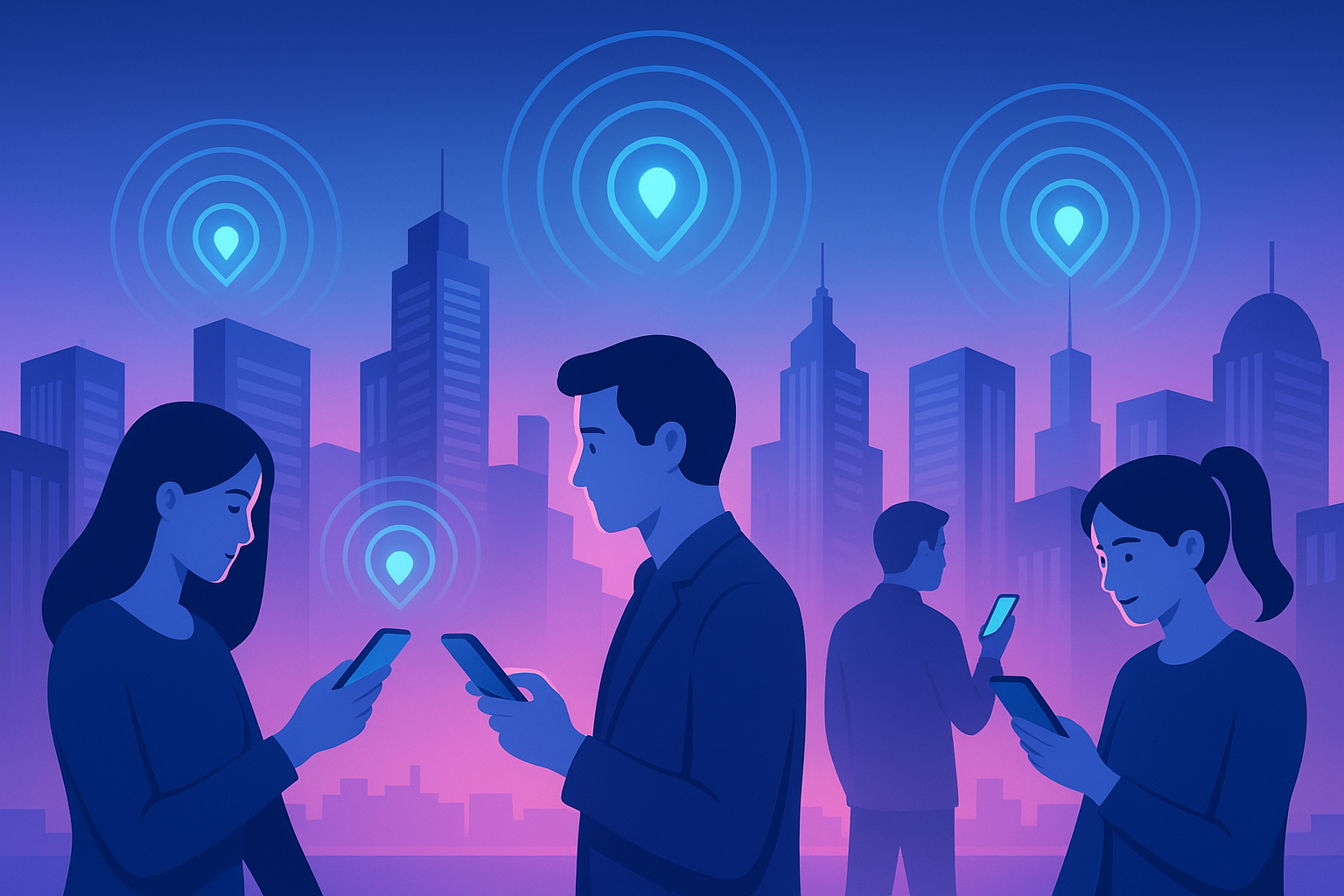Beacon Technology and Location-Based Personalization: Building Context-Aware Experiences for the Next Wave of Interaction

In today’s highly connected world, personalization is key to user engagement. Users now expect technology to understand them, from tailored ads to predictive recommendations. However, the next step in personalization relies not only on data from screens but also on the physical world. Beacon technology, along with location-based personalization, is creating a new wave of context-aware experiences that smoothly connect the digital and physical worlds.
What is Beacon Technology?
Beacons are small Bluetooth Low Energy (BLE) devices that send signals to nearby smartphones or tablets. When an app that recognizes the beacon is close, it can trigger specific actions, such as sending notifications, unlocking app features, or providing personalized content based on proximity.
Think of beacons as quiet digital messengers that alert your device, “Hey, you’re close to something interesting.” This lets businesses and developers craft local interactions that feel natural and meaningful.
The Power of Location-Based Personalization
Traditional personalization relies heavily on online behavior—clicks, searches, and preferences. Location-based personalization, however, adds real-world context to this mix.
By understanding where users are (and, in some cases, where they’ve been), apps can adapt in real time to offer experiences that are contextually meaningful. For example:
- Retail: A store can send personalized discounts when customers walk past certain aisles.
- Airports: Travelers can receive gate updates, lounge access info, or directions based on their terminal.
- Museums: Visitors can access multimedia guides or AR experiences near specific exhibits.
- Hospitality: Hotels can greet guests via mobile check-in or offer on-site promotions as they explore the property.
These experiences don’t just engage users—they delight them by providing value at the right place and time.
How Beacon Technology Enables Context-Aware Interactions
Beacons serve as an unseen layer of connectivity that adds contextual intelligence to mobile experiences. When combined with user data, AI, and analytics, they support strong applications:
- Proximity Detection: Determine when users are close to specific zones or products.
- Micro-Location Targeting: Go beyond GPS accuracy, which can be imprecise indoors, to detect proximity within centimeters.
- Trigger Automation: Send push notifications, play media, or log user behavior based on location.
- Seamless Integrations: Connect with CRM systems to customize offers, recommendations, or loyalty rewards.
The result is an experience that feels less like marketing and more like a personal assistant that knows where you are and what you need.
Privacy and User Control
While beacon technology is powerful, it also raises important privacy concerns. Transparency and consent are essential. Users should always understand:
- What data is being collected
- How it’s being used
- How they can opt out or control permissions
Respecting user privacy builds trust and ensures compliance with data protection laws like GDPR and CCPA.
Real-World Use Cases
- Apple Stores: Use iBeacons to provide product details and checkout options as customers walk around.
- Coca-Cola: Installed beacons in vending machines to send coupons and fun rewards.
- Airports & Transit Systems: Provide navigation in real-time, gate information, and alerts for nearby locations.
- Museums: Offer engaging storytelling experiences with location-triggered AR content.
Each of these examples shows how physical context turns user engagement into a meaningful interaction.
The Future: Smarter, Seamless, and More Human
As AI and IoT continue to grow, beacon technology will be important in ambient computing. In this setting, devices work together to anticipate needs and respond smartly without needing specific commands. The combination of location data, predictive analytics, and context awareness will make experiences more natural, personal, and efficient.
Imagine walking into a café where your favorite drink is already being made because the system knows what you like and has sensed your arrival. That’s not science fiction; it’s the future of digital interaction.
Final Thoughts
Beacon technology and location-based personalization are changing how brands and users connect. By combining digital insights with real-world context, businesses can create experiences that are timely, relevant, and engaging.
The future belongs to apps and systems that not only respond but also anticipate, understand, and improve the user’s journey in every context.